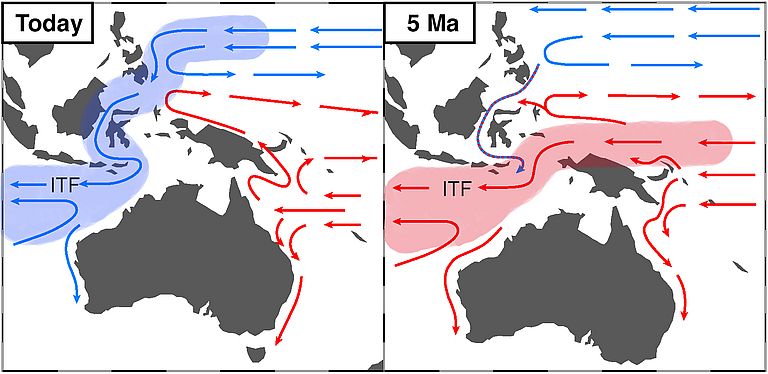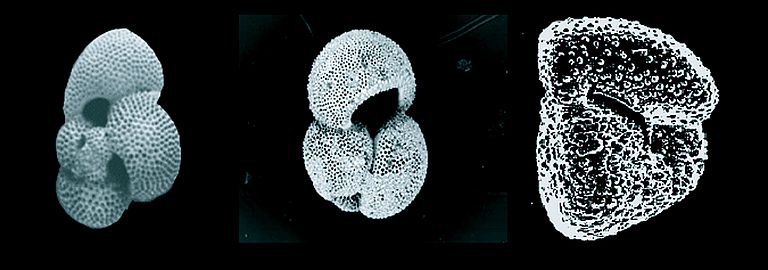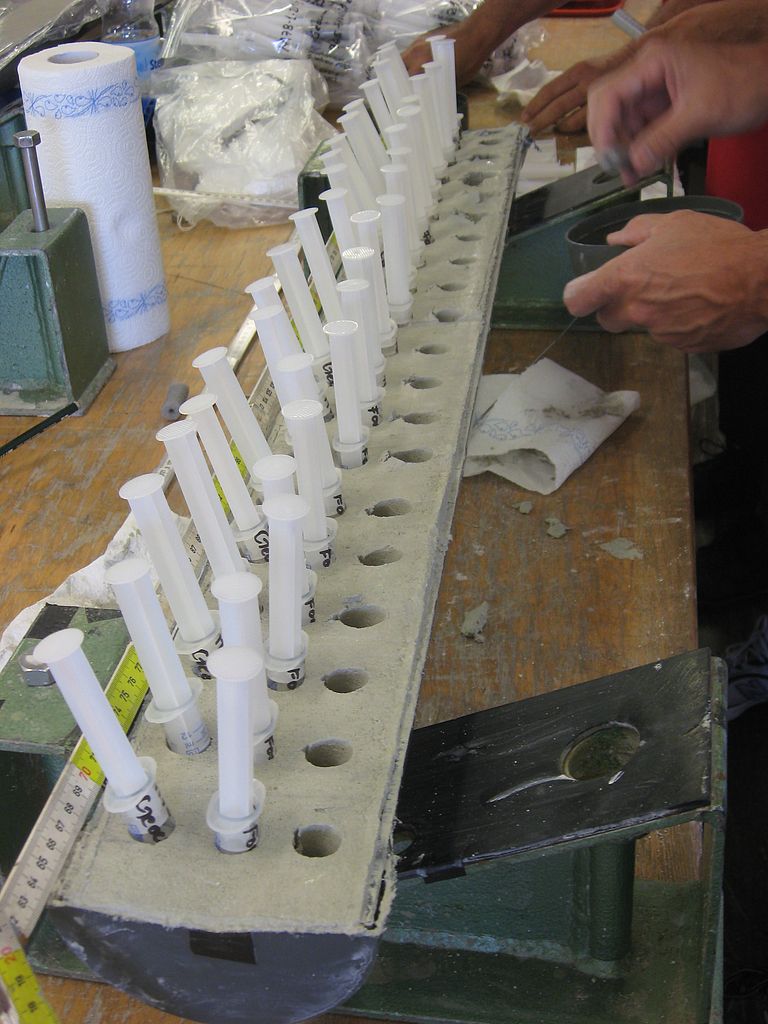From Greenhouse to Ice House
Kiel, May 17, 2009: One of the mysteries of the Earth’s history is the fundamental climate change in the Mid Pliocene, about 3.5-2.5 million years ago. By that time warm climate conditions ended and the ice caps in the northern hemisphere developed. Investigations by marines scientists from Germany and India suggest that changes in the Indonesian throughflow might have been the determining process for this fundamental climate change. The study will appear May 18, 2009 as an advanced online publication in the international journal Nature Geoscience.
The forcing mechanisms initiating the Mid-Pliocene climate change from a „Greenhouse“ to an „Icehouse World“ with extended continental ice sheets at high northern latitudes is still controversely debated – although quite sophisticated geochemical methods are at hand to reconstruct Earth´s history. There are notions that the closure of the Panamanian Gateway was pre-conditioning high northern latitude glaciation. Now, a group of marine scientists from Germany and India under the leadership of the Leibniz Institute of Marine Sciences (IFM-GEOMAR), Kiel, found compelling evidence that between 3.5-2.5 million years the watermass throughflow of the Indonesian Gateway changed at the subsurface level from warm and saline South Pacific watermasses towards cool and fresh ones originating from the North Pacific – with dramatic climatic effects. Their findings are supported by model results suggesting that the continuous plate tectonic narrowing of the Indonesian Seaway might have had an ever-lasting impact on global climate change. The importance of the Indonesian Gateway is apparent as it is at a key location of the global thermohaline circulation, linking two major ocean basins and transferring huge amounts of heat from the Pacific into the Indian Ocean.
Indeed, the Mid-Pliocene change in the Indonesian throughflow induced not only a dramatic cooling of ca. 4°C in the tropical Indian Ocean subsurface level (ca. 300-400m), but also contributed to a significant ocean surface cooling in various upwelling regions worldwide, said Cyrus Karas, first author of the study.
The dramatic subsurface cooling signal was most likely transported westward into the Indian Ocean and further towards the South Atlantic via the Agulhas Current. Upwelling processes off South West Africa and off Somalia, might have brought the cold signal to the surface. Colder sea surface temperatures in the West Indian Ocean might have led to less evaporation, dryer conditions in East Africa and in consequence, to a change in hominid evolution.
Even the equatorial East Pacific, where today cold upwelling appears, might have been affected through the constriction of the Indonesian Gateway. With the change in Indonesian subsurface throughflow, the authors suspect that an increasing portion of cold Subantarctic Mode Water was transported via „ocean tunnels“ northward and contributed to the Equatorial Undercurrent. This subsurface current might have transported the cold water signal all the way from the West to the East Pacific not only amplifying the cold upwelling there, but also terminating the permanent El Niño-like state of the Pliocene world.
Scientific paper:
Karas, C., D. Nürnberg, A.K. Gupta, R. Tiedemann, K. Mohan and T. Bickert, 2009: Mid-Pliocene climate change amplified by a switch in Indonesian subsurface throughflow. Nature Geoscience, 2, doi: 10.1038/NGEO520.
Contact:
Dr. Andreas Villwock (Public relations), Phone: +49-431 - 600 2802, avillwock@geomar.de





